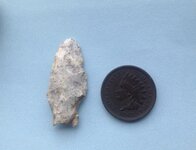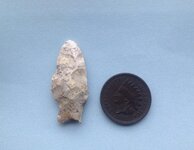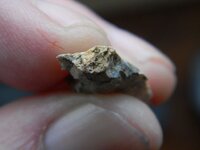Charl
Silver Member
Found this little guy in a field yesterday. In the nick of time with still another snowstorm Tues-Wed. this week. It shows a fire pop on the edge of one side(2nd photo, right edge), appears more brittle then normal, and there is damage at the base exposing a desiccated reddened interior. Much redder then the camera shows for some reason. Anyway, quite possibly this is a point that was cooked inside the game it brought down. Leading to scenarios like this: "Dinners ready! Watch your teeth, couldn't find the point". Lol......
Attachments
Last edited:
Upvote
0








